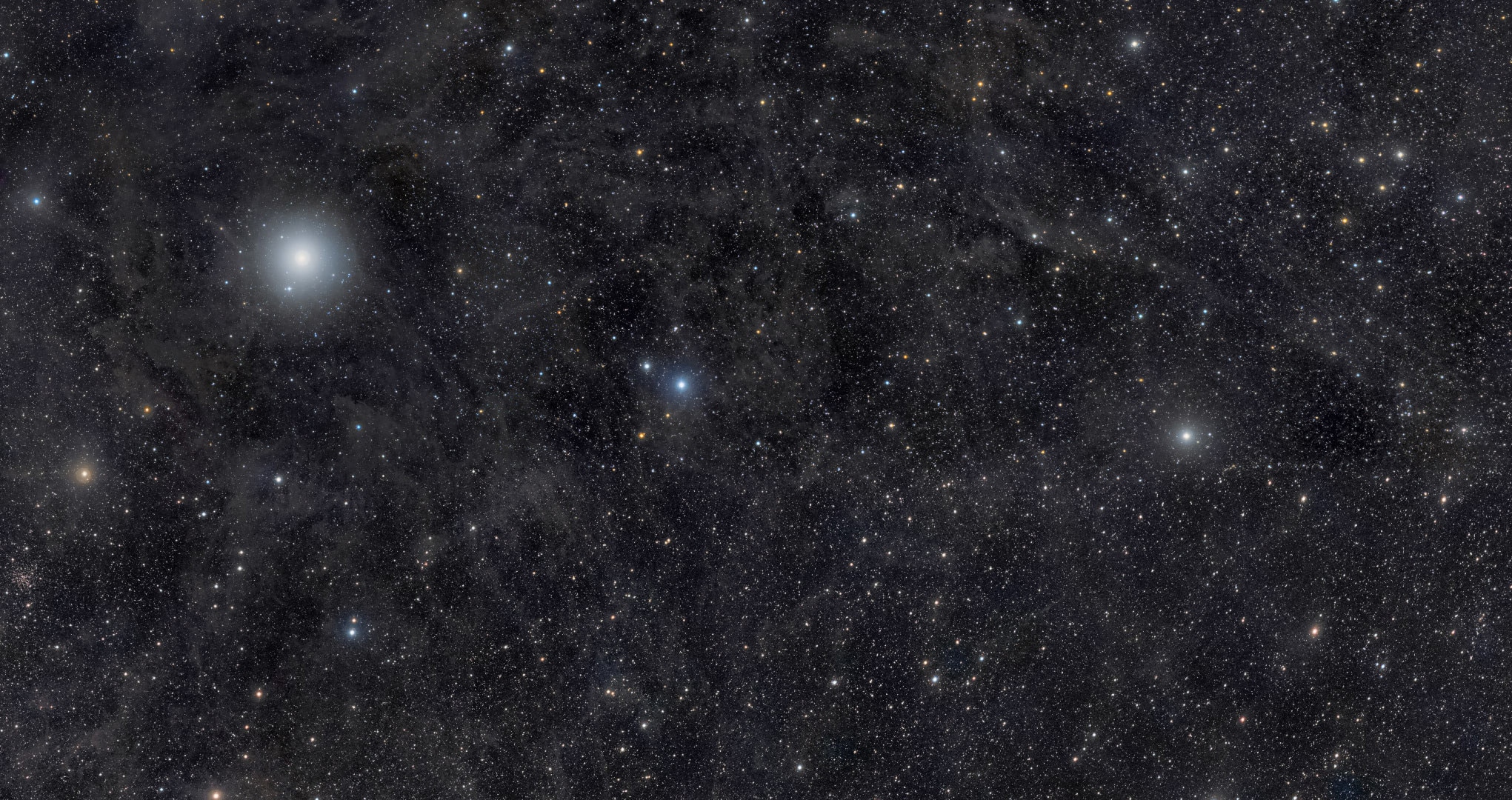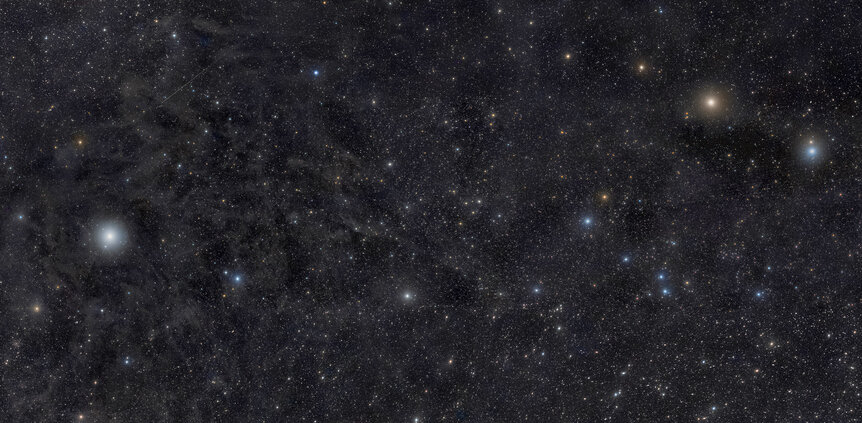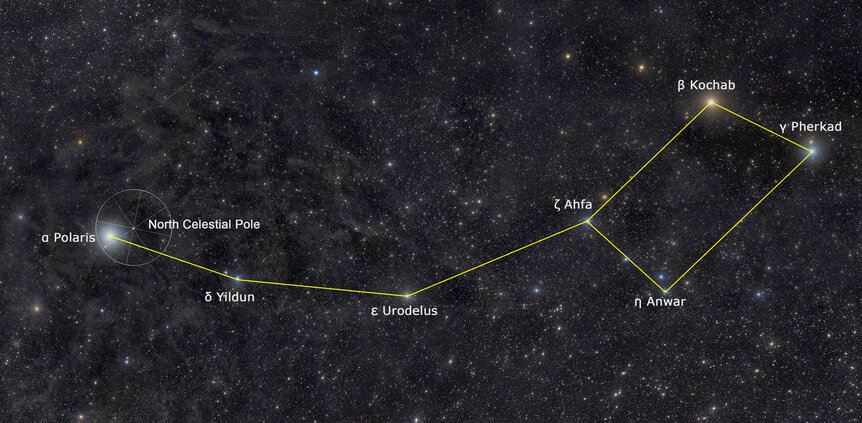Create a free profile to get unlimited access to exclusive videos, sweepstakes, and more!
Take a little dip in the Little Dipper

We live in an interesting time. Astronomically speaking, I mean. It just so happens that right now, if you draw a line from Earth's south pole, through the Earth's center, up through the north pole, and extend it up into the sky, it points very close to a fair-to-middlin' bright star.
That star has the designation Alpha Ursae Minoris, but you may know it better as Polaris. It's actually named that way because it's the pole star, the north pole of the sky. You can think of the sky as being like the Earth's surface expanded outward to infinity. As the Earth spins we feel motionless, with the sky apparently spinning above us. It has a north celestial pole, a south celestial pole, and even a celestial equator.
Alpha Ursae Minoris happens to be very close to that north celestial pole. That makes it an important star, because if you can find it you know you're facing north. But that designation of Alpha means it's important in another way: It's the brightest star in the constellation Ursa Minor: The Little Dipper.
That becomes pretty obvious, too, when you gaze upon the simply gorgeous photo master astrophotographer Rogelio Bernal Andreo took of the constellation back in 2011. I mean seriously, look at this!
Polaris is the bright star to the left. Funny, it's really only about the 50th brightest star in the sky — it can be hard to see in even mildly light-polluted areas — but it shines like a beacon here. Of course, Rogelio used his fabulous Takahashi FSQ106EDX telescope and SBIG STL 11k CCD camera — if you want to capture big shots of the sky, that's the dream combo right there (and if you detect just a wee bit of jealousy here, well, I won't deny it).
This image is actually a mosaic made up of 20 frames, and each one consisted of six exposures in four filters (what astronomers call LRGB: luminance (unfiltered), red, green, and blue, to create a natural color image). Each exposure was 5 minutes, so the total was a staggering 40 hours of imaging! He took some of the shots in Spain and some in California.
If you're having a hard time seeing the actual dipper, Rogelio has you covered with this annotated version:
You may notice that Polaris is not exactly on the pole. It would be a huge coincidence if it were! It's right now about 2/3rds of a degree (a bit bigger than the size of the full Moon on the sky) from the actual true pole. And that's only for now. The Earth wobbles, like a top losing energy, so the axis of the Earth makes a slow circle in the sky. And by slow, I mean it takes 26,000 years to make a complete circuit.
We call this precession, and it's a pain: As the pole moves in the sky, the coordinate system we use to measure positions of objects changes. Imagine if the Earth's north pole wandered over the Arctic, we'd have to change our latitude and longitude system! That's an issue astronomers have to deal with to get precise measurements and even to plan our observations.
The pole will move closest to Polaris in March 2100, when it'll be a bit more than half its current distance. After that the pole will pull away, and Polaris will find its grasp on fame more tenuous. It's only really been near the pole for the past millennium or so; 2000 years ago it was as close to Kochab on the other side of the Little Dipper as it was to Polaris.
And far be it from me to cast aspersion on a writer with the stature of Shakespeare, but he goofed when he wrote Julius Caesar. In it, the eponymous leader says,
But I am constant as the northern star,
Of whose true fixed and resting quality
There is no fellow in the firmament.
Yeah, oops. For one, Polaris isn't fixed and resting. For another, it's actually a Cepheid variable star, changing its brightness over time. And third, it wasn't even the North Star in Caesar's time! Shakespeare should've read my blog.
If you look again at Rogelio's shot, you’ll see that there appears to be wispy stuff all through it. That's real! It's called galactic cirrus, or integrated flux nebula: very tenuous clouds of dust floating between the stars, and just barely illuminated by them (hence the second name; "integrated" means "added up," and it reflects the light of all the stars around it). It's incredibly faint, and Rogelio is really good at teasing it out of the background. You can see it in his photo of the Big Dipper as well.
Also, take a look just above Polaris. See that razor thing streak? That's likely a meteor, a small bit of rock burning up in our atmosphere. In a 40 hour exposure you're bound to see one or two of those! To be honest, it might be a faint satellite in a polar orbit (one that goes mostly north/south instead of east/west), though by the way it starts off faint, gets bright, then just cuts off, it looks far more like a piece of space debris to me.
[Update (March 28, 2018): BA reader Rick Johnson sent me an email making a convincing argument that the trail actually is a satellite and not a meteor. The satellite would have come in from the top, out of Earth's shadow (he says the location for that is correct for this image) and it cuts off to the lower left as the exposure ended in one of the sub-frames making up the images in the mosiac. There are lots of other details, too, but all in all I think he's most likely right. I stand corrected.]
As any (boreal) amateur astronomer will tell you, when you take your 'scope out of the garage and set it up, the first thing you do is polar align it, get it set up to track the motion of the stars as the sky spins overhead. That means aiming it at Polaris to get it as close to the north celestial pole as possible.
And the next time I do that with my own 'scope, I'll be thinking of this image, and remembering that Polaris is more than just a useful guidepost. It benchmarks an area of the sky just as gorgeous as any other you care to pick.
















